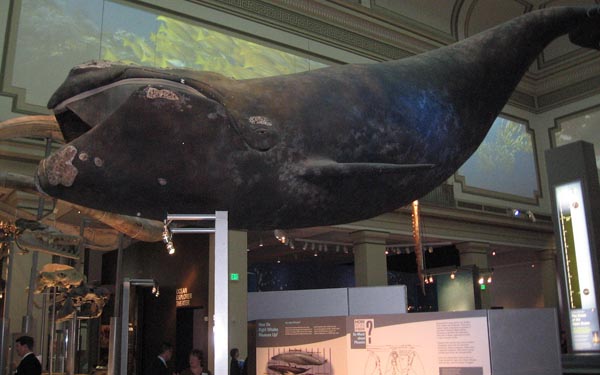Science buffs, museum hoppers, and fish fans alike will have much to explore this Saturday when the new Sant Ocean Hall opens to the public at the National Museum of Natural History.
The permanent exhibit—five years and $49 million in the making—is a collaborative effort between the Smithsonian Institution and the National Oceanographic and Atmospheric Administration (NOAA).
“It will change the way the world looks at the ocean,” says Wayne Clough, secretary of the Smithsonian Institution. “We’ve taken this life-sustaining [resource] for granted too long. We have to become better stewards.”
Given the two organizations’ mission to educate the public about the diversity and importance of the seas, the new hall has a particular penchant for relating marine issues—both past and present—back to human involvement. Many of the displays have a small hand symbol next to them, which explain the intertwined relationship between mankind and the oceans.
“We ask visitors to explore the open ocean away from any land masses,” explains project manager Elizabeth Musteen. “It’s a part of the ocean that we know the least about, but we’re learning more every day.”
The Sant Ocean Hall is grand in scale, featuring some 674 specimens, more than 300 fossils, 12 unique exhibit sections, and a 1,500-gallon tank with more than 70 marine species. A life-size model of a North Atlantic right whale named Phoenix hangs from the ceiling and appears to be swimming as a dozen video screens around it play the documentary film Ocean Odyssey. The whale is named and modeled after an actual whale that scientists have been tracking for more than two decades.
“Phoenix is our icon and ambassador,” says NOAA administrator Conrad Lautenbacher.
Although the hall will largely feature new specimens and models, some older displays from around the museum have been moved to complement the new exhibit. The Megalodon shark jaw, which was hanging on the wall of an upper floor, now has a place of honor (and its own glass case) in the hall, while the skeleton of a Basilosaurus (an ancient whale) is now suspended next to its popular descendant, Phoenix.
To celebrate the Sant Ocean Hall’s opening day, Hawaiian dancers and Alaskan Tlingit drummers will perform, while a panel of museum officials will discuss their experiences in creating the exhibit. The festivities will also include book signings and a presentation on monitoring marine life.
For more information on the Sant Ocean Hall and opening day, visit ocean.si.edu.
More>> After Hours Blog | Arts & Events | Happy Hour Finder | Calendar of Events
















